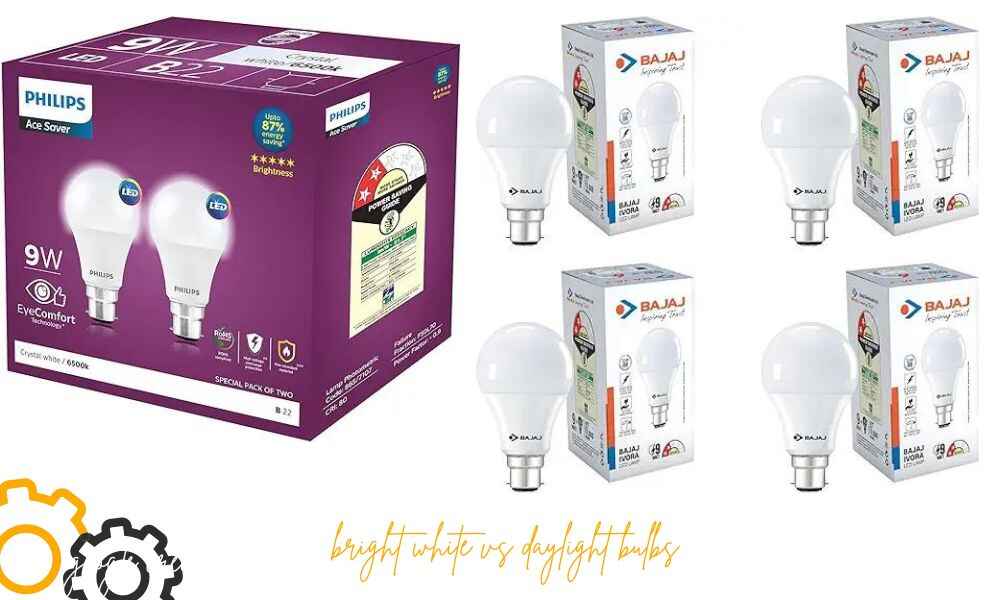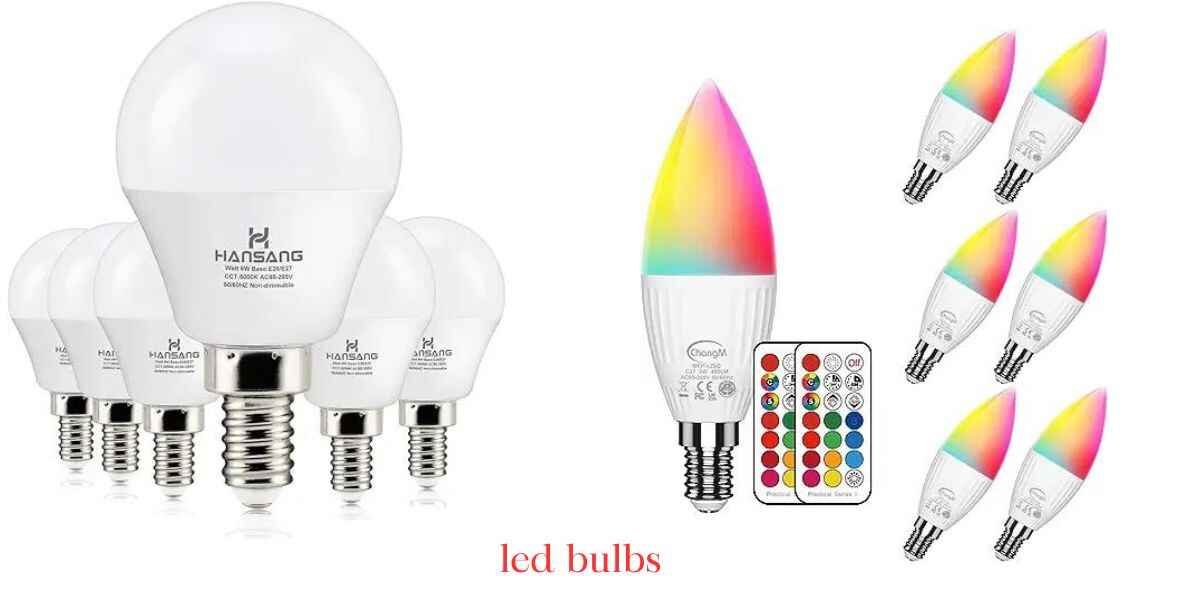Is It Worth Replacing Bulbs with LEDs? It has become commonplace to replace conventional incandescent or fluorescent bulbs with LED (Light Emitting Diode) bulbs. is it worth replacing bulbs with led ? this article will examine the advantages, expenses, and possible disadvantages of switching to LED light bulbs from conventional ones. For your convenience, we’ll also discuss relevant terms like lifetime, cost savings, and energy efficiency.

What Are LED Bulbs?
LED bulbs are a kind of illumination where light is produced by a semiconductor using electricity. Unlike fluorescent or incandescent bulbs, which employ gas or a glowing filament, respectively, LEDs generate light using an electroluminescence process. They last longer and use less energy as a result.
Benefits of LED Bulbs
- Energy Efficiency: The energy efficiency of LED lamps is one of its main benefits. Compared to incandescent and fluorescent bulbs, LEDs consume up to 80% less energy. Over time, you may save a significant amount of money on your electricity bills as a result of this large reduction in energy consumption.
- Long Lifespan: The lifespan of LED bulbs is significantly longer than that of conventional bulbs. An LED bulb can last up to 25,000 hours or longer, whereas an incandescent bulb usually lasts approximately 1,000 hours and a fluorescent light roughly 10,000 hours. This translates to reduced maintenance expenses and replacements.
- Cost Savings: Despite initially costing more than incandescent or fluorescent lights, LEDs save money over time due to their extended lifespan and energy efficiency. The U.S. Department of Energy estimates that making the switch to LED lighting can save the typical home $225 in energy expenses annually.
- Environmental Impact: When it comes to the ecology, LED bulbs are preferable than older ones. They use less energy, which lowers the need for electricity and, as a result, less fossil fuels are used in power plants. Furthermore, dangerous materials like mercury, which is present in fluorescent lights and is bad for the environment and human health, are absent from LEDs.
- Improved Light Quality: Better light quality and flexibility in terms of brightness and color temperature are provided by LEDs. They give off light instantly, saving you the warm-up period that fluorescent bulbs need. Additionally, LEDs come in a range of color temperatures, from cool daylight to warm white, so you can select the ideal illumination for a variety of areas and uses.
Potential Drawbacks of LED Bulbs
- Higher Initial Cost: The higher initial cost of LED bulbs in comparison to incandescent lights is one of its key downsides. But over time, the energy savings and fewer replacements are more than this expense.
- Compatibility Issues: Certain fixtures or dimmer switches may not be able to accommodate LED bulbs. To guarantee compatibility, it’s critical to review the specifications of the fixtures and the bulbs.
- Heat Sensitivity: LEDs are vulnerable to high temperatures even though they are typically cold to the touch and generate less heat than incandescent lamps. Overheating might shorten their life and decrease their effectiveness. Use of LED bulbs in well-ventilated installations is therefore imperative.
Cost Analysis: LED vs. Traditional Bulbs
- Initial Investment: LED bulbs are more expensive to buy initially than incandescent and fluorescent bulbs. Nevertheless, in the long term, LEDs show to be more economical due to their extended lifespan and energy efficiency.
- Energy Costs: LED light bulbs use a great deal less energy. A 10-watt LED lightbulb, for instance, may provide the same amount of light as a 60-watt incandescent lightbulb. The direct result of this wattage reduction is a decrease in electricity costs.
- Replacement Frequency: Compared to conventional bulbs, LED bulbs require fewer replacements because of their extended lifespan. This increases overall convenience and reduces costs by requiring fewer trips to the shop and less time spent changing bulbs.
Comparing Light Quality
- Color Temperature: The color temperatures of LED lights vary and are expressed in Kelvin (K). Higher Kelvin values (5000K–6500K) provide a cold, bluish light similar to sunshine, while lower values (2700K–3000K) produce a warm, yellowish light similar to incandescent bulbs. You may select the ideal light quality for various scenarios thanks to its diversity.
- Color Rendering Index (CRI): In comparison to natural light, a light source’s ability to accurately reveal an object’s color is measured by the Color Rendering Index (CRI). Since LEDs typically have a high CRI, they’re great in situations where color fidelity is crucial, like kitchens and art studios.
- Brightness: Another area in which LEDs shine is brightness, which is expressed in lumens. They give off a constant, strong light without the occasional flicker that fluorescent bulbs might produce. Because of this, they are perfect for reading lights, task lighting, and other uses that call for constant illumination.
LED Bulbs for Different Uses
- Home Lighting: Because of their energy economy and versatility, LEDs are ideal for usage at home. They can be utilized in a variety of settings, such as outdoor lighting, table lamps, and ceiling lights. Furthermore, smart LED lights may be remotely controlled with smartphone apps, making it easy to change the lighting.
- Office Lighting: LED light bulbs offer brilliant, flicker-free illumination in offices, which can lessen eye strain and increase productivity. Because of their extended longevity, replacements are needed less frequently, which is especially advantageous in commercial settings.
Industrial and Outdoor Lighting
Additionally perfect for outdoor and industrial applications are LEDs. They function well in high temperatures and are robust, vibration- and shock-resistant, and resilient. For wide regions, LED floodlights, streetlights, and security lights provide dependable, excellent illumination.

Can You Replace Any Bulb With Led
Yes, you can replace almost any bulb with an LED. LED bulbs are energy-efficient and long-lasting. They fit most fixtures, whether you have incandescent, CFL, or halogen bulbs. Just match the base type, such as E26 or GU10, and ensure the LED’s lumens match your old bulb’s brightness.
LEDs also come in various color temperatures, from warm white to daylight, making them versatile for any room. Before installing, check if the LED is dimmable if you have a dimmer switch. Always turn off the power before changing bulbs. LED bulbs are safe, environmentally friendly, and can save you money on electricity bills. Make the switch to enjoy better lighting and lower energy costs.
Are LED Bulbs Worth It?
It’s evident from weighing the advantages, disadvantages, and expenses that LED lights are a wise purchase for the majority of homes and businesses. They are a wise choice for many different applications because of their excellent light quality, extended lifespan, and energy efficiency.
- Financial Benefits: LED bulbs are initially more expensive, but their lower maintenance and energy savings soon offset that cost. This adds up to major financial savings over time, particularly for larger properties with more extensive lighting requirements.
- Environmental Benefits: Making the transition to LED lighting also supports environmental sustainability. LEDs contribute to a healthier planet by decreasing hazardous waste and consuming less energy. This reduces your carbon footprint.
- Improved Lighting Experience: LED lighting has become much more versatile and of higher quality as a result of technological breakthroughs in LEDs. LED bulbs are the perfect answer if you’re looking for clear, brilliant light for your workstation or warm, comforting illumination for your living area.
Read Also: why do led bulbs continue to glow when turned off
Conclusion: is it worth replacing bulbs with led
Is it worth replacing bulbs with LED? Indeed. Though they may cost more up front, LED bulbs are a better option than conventional incandescent and fluorescent bulbs due to their long-term cost savings, improved lighting quality, and environmental advantages. You’ll save money on energy costs and help create a more sustainable future by making the move. Thus, think about replacing your lighting now and take advantage of all the advantages that LED bulbs have to offer.
Hi, I’m Malik Suhail—an SEO expert, web designer, and passionate blogger with 2 years of experience. I specialize in crafting content that is not only informative but also tailored to meet the needs of my readers.
I write about diverse topics, always striving to simplify complex ideas and provide valuable insights that resonate with my audience. Whether it’s about SEO strategies, web design trends, or blogging tips, I am committed to delivering well-researched, practical, and easy-to-understand information.
My mission is to help readers navigate the digital world with confidence and clarity. I believe in adding value through authentic content that inspires action and delivers results.



